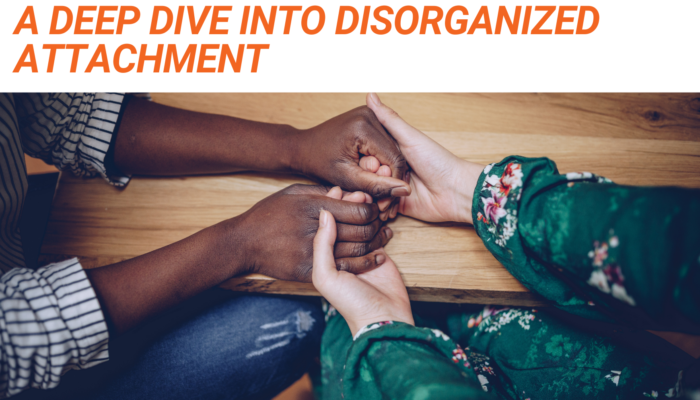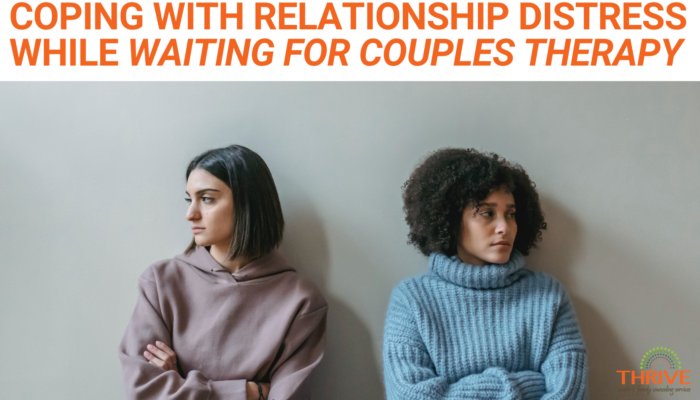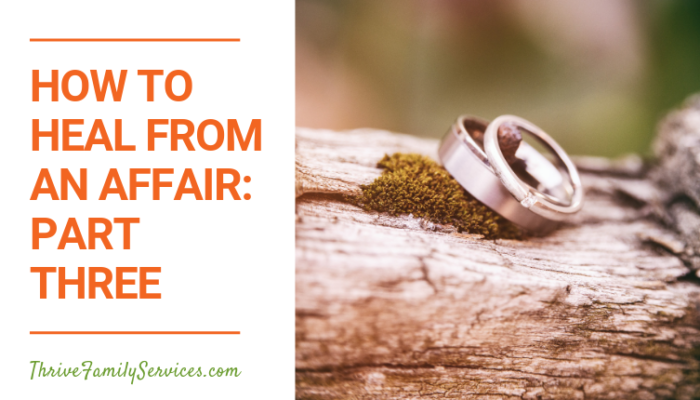What are attachment styles, and why are they important?
As a relationship therapist, there is one blatant fact about humanity that shows up with every client that I see: People are wired for connection. In fact, people will do whatever they feel like they need to do in order to ensure that their relationships survive for their own well-being.
From birth, babies need other people for survival, and this fact stays consistent across the lifespan. No matter how old a person is, humans need connection with other people to thrive.
Scientific research shows that people with at least one secure, connecting relationship live longer, happier, healthier lives than people who do not.
When a person loses connection with other people for a period of time, their brain actually starts to deteriorate, feelings of fear and anxiety start to escalate, and their body’s stress response goes into overdrive.
Have you ever tried to go to work while in the middle of a fight with your partner?
Chances are that it was difficult to stay focused and present at work because the feelings of a loss of security are so intense.
This need for human connection is actually one of the reasons why solitary confinement has such awful consequences on the psyche!
Needless to say, our human instincts direct us to do whatever we need to do to make sure that our relationships don’t fall apart.
However, what a person does to maintain their sense of connection depends on their unique relationship history and experiences.
Psychologists John Bowlby and Mary Ainsworth actually used this fact to do research to determine the ways that children learn to connect with their parents and how that translates to connection in their adult relationships.
In this research, Bowlby and Ainsworth observed four different ways that people learn to attach to each other. They labeled these four types as “attachment styles.” The four attachment styles are: secure, anxious, avoidant, and disorganized.
In my work as a relationship therapist, I determine my clients’ attachment styles as a way to categorize how each person has learned to operate in order to maintain their sense of relationship security.
I’ve found that it can be helpful for my clients to make sense of their own attachment styles, so let’s get to know more about people with a Disorganized Attachment style.
How Do I Know If I Have a Disorganized Attachment Style?
A disorganized attachment style is the least common of the four attachment styles. It’s actually estimated that only about 5% of the population have adapted a disorganized attachment strategy. Adults with a disorganized attachment style have the hardest time trusting other people because of a learned fear that people who get close to them will hurt them. Although they want to love and be loved (like all other human beings), they have a strong fear about letting anyone in.
The strategies that are used by people with a disorganized attachment style come across as very inconsistent to their partner. Adults with a disorganized attachment style use tactics to keep themselves from getting hurt from those closest to them while simultaneously showing that they want to let their loved ones in.
What does disorganized attachment look like?
- Contradicting messages from behavior in intimate relationships (“I hate you, but don’t leave me.”)
- An inability to regulate emotions or how to respond to the emotions of others
- Alternating between clinginess and distancing
- Difficulty bonding with, opening up to, and trusting other people
- A blend of the behaviors of anxious and avoidant attachment styles
In essence, adults with a disorganized attachment style expect and anticipate rejection, disappointment, and hurt in relationships.
They’ve learned that these experiences are inevitable, and this mindset often becomes a self-fulfilling cycle. These adults might end up choosing partners that trigger their fear of being rejected because it feels familiar. It can end up being an unintentional form of self-sabotage that causes relationships to end over and over for adults with a disorganized attachment style.
What does disorganized attachment look like in adult relationships?
In Emotionally-Focused Therapy, repetitive patterns (or cycles) are traced in relationships. In relationships where one partner has a disorganized attachment strategy, that partner is often behaving in a way that ends up pushing their partner away because they are expecting their partner to hurt them – but then end up in a place of distress because they are really wanting their partner to stay.
Because adults with a disorganized attachment style have a negative view of themselves and others, it is very scary for them to let other people get close enough to them to form intimate bonds. This is why they end up forming a very incoherent, disorganized approach towards attaching to other people. They want to belong and be loved, but they are afraid to let anyone get close enough to hurt them. They are afraid of intimacy but equally scared of not ever having it.
How does relationship history influence disorganized attachment?
A disorganized attachment style is developed when a child’s caregivers become a source of fear. It is often seen in children and adults who have been physically, verbally, or sexually abused by the people who are supposed to be their source of safety. Furthermore, children who develop a disorganized attachment style saw their parent – or the person they relied on for care – as extremely inconsistent and unpredictable. Sometimes the parent would be a source of nurturing. Other times, the very same parent would be a source of neglect, fear, or pain.
This makes sense as an environment that would create a disorganized attachment style in a child. After all, attachment styles are formed as a way to adapt to a context in order to avoid pain and loneliness and to get one’s needs met. Children who don’t know whether or not their parent is safe (or if they know for sure that their parent makes them scared), their worldview becomes very disorganized, disorienting, and distressing. In fact, this perceived fear ends up becoming a central component in the brain’s development!
The fear that leads to a disorganized attachment style can be developed in two ways.
Either the caregiver is very inconsistent and unpredictable (sometimes meeting their child’s needs and sometimes neglecting them) or the child grows up experiencing or witnessing traumatizing experiences that happen at the hands of their caregiver. Either way, the child is never truly able to adapt to their caregiver with a sense of consistency or safety. The child ends up longing for closeness and comfort from their caregiver (like humans innately do), but they also feel a strong need to reject their caregiver’s proximity in order to not get hurt.
What are examples of developing a disorganized attachment style?
-
Tia’s Story
-
Tia is three years old, and she never met her dad. However, she and her mom are living with her mom’s boyfriend who encourages her mom to hurt her when she is in trouble. Whenever they are around her mom’s boyfriend, Tia feels like she can’t do anything right. Her mom hits her, pinches her, punches her, or ignores her for things that don’t make sense to Tia. When her mom’s boyfriend isn’t around, sometimes the same behavior happens but other times, her mom comes to her and apologizes. Whenever her mom apologizes, Tia really wants to believe it, but she is too scared that the abuse will happen again.
-
-
Kyle’s Story
-
For all of Kyle’s life so far, he has watched his mom and dad abuse and neglect his older sister. Kyle watches his parents do awful things to his sister, and he sees his sister always looking so scared and sad. Kyle doesn’t understand why his parents are so mean and hurtful to his sister, but when they try to be nice towards him, he finds himself feeling anxious. How can these people that he loves so much do such terrible things to someone else that he loves? He really wants his parents to stop hurting his sister and to be a happy family. However, he also wishes that they would go away and never come back so his sister could be safe. He isn’t sure if his parents are nice or mean people. They seem to be both.
-
-
Jordan’s Story
-
Jordan is only one year old when his mom dies and his dad starts coping by using drugs and alcohol. Suddenly, he seems to have lost both of his parents. Although his dad is still his dad, sometimes his dad forgets to come home for days. Other times, his dad is just sleeping on the couch and isn’t available when Jordan needs him. He cries and screams, but other times he is just silent and goes hungry. Either way, his dad doesn’t seem to respond. When his dad is awake and physically present, Jordan notices that his dad seems to be angry or distracted. Sometimes he even pushes Jordan and tells him to stop whining. Sometimes they have food and water, but other times, they don’t. Jordan doesn’t know what to do, but he knows that he needs his dad to take care of him. So when his dad isn’t taking care of him, Jordan gets very scared and isn’t sure when his needs will be met. He is very lonely but very scared to tell his dad how he’s feeling because he doesn’t want to upset him. However, he also feels scared of his dad’s anger.
-
What triggers people with a disorganized attachment style?
Because adults with a disorganized attachment have a very push-pull dynamic within themselves in their approach to relationships, they can be triggered by anything that feels like someone both pulling away or coming closer.
After all, they aren’t sure which one they want more because they expect that people coming closer will inevitably get them hurt. It can feel very scary.
Below are common causes of distress for people with a disorganized attachment style.
-
Emotional Intimacy and Emotional Distance
- Because an adult with a disorganized attachment style feels threatened by being too vulnerable with someone and feels a longing to want to be close, both ends of the spectrum of emotional connection/disconnection can be scary.
-
Feeling at-risk of rejection or abandonment
- Feeling ignored or pushed away from one’s partner can be extremely triggering for anyone, but especially for someone with a disorganized attachment style. That real or perceived distance, especially if it’s unpredictable, can feel like a warning sign for even more scary behaviors coming up – rejection or abandonment.
-
A lack of coherence from their partner
- When someone with a disorganized attachment style can’t make sense of their partner’s behavior or they experience a lack of coherence in their partner’s actions, there is a high chance that they will start to feel scared.
-
Suspicious behavior
- Similarly to a lack of coherence being a trigger, when someone with a disorganized attachment makes the meaning that their partner is being suspicious, they can feel scared and a disorganized response for what to do. On one hand, they might want to push their partner away to not get hurt; On the other hand, they might want to get closer to their partner to make sense of the suspicious, scary behavior.
-
Trauma triggers
- Like anyone with trauma, adults with a disorganized attachment style have certain triggers that stir up a trauma response. Because most people with a disorganized attachment style experienced or witnessed some kind of abuse as young children, their brains learn to associate certain cues with a protective, panicked, reaction. For example, if one’s parent always smelled like alcohol before abuse started, that person might feel fear whenever they smell alcohol on their partner.
How can I cope with a disorganized attachment style?
I once read an article about adults with a disorganized attachment style, and the author described living with this attachment style like playing a game that you never really understood the rules of. You want to play the game and win, but no one ever told you how to play. Additionally, you lose every time you try to play the game and you end up getting hurt.
The first thing you need to know if you identify with a disorganized attachment style is that it’s not your fault that no one told you how to play “the game” and win. Because you’re human, you have an innate desire to want to connect with other people. However, knowing how to use emotions to connect with other people is not innate knowledge.
Emotional and relational intelligence is something that is modeled by caretakers to infants and children. So if your caretakers taught you that relationships are something to be scared of, it makes complete sense that you’d feel caught between two conflicting instincts. Chances are that your caregiver also learned a disorganized attachment style. The second thing you need to know if that it’s not too late to heal and learn the “rules of the game.”
How does therapy help with a disorganized attachment style?
Doing trauma work in therapy is one of the best things you can do for yourself, your loved ones, or even your (future) children. One of the key lessons that someone with a disorganized attachment style has been taught is that people they should be able to trust inevitably hurt them. That lesson leads to an instinct that screams to not trust people. However, that creates a lot of loneliness and isolation that then ignites the other instinct to not be alone.
That being said, finding someone that makes it a little easier to trust (like a non-judging, predictable, accepting therapist or a platonic friend) can be the perfect place to start opening up and exploring your experiences, needs, and emotions in a safe environment. Don’t push yourself to the limit. Instead, find a pace of forming safe relationships and trauma recovery that works for you.
My partner has a disorganized attachment style. What can I do?
If someone you love has a disorganized attachment style and you want to find effective ways to respond, there are a few things you can do.
First, remember that their difficulty with both distance and closeness is not about you. It’s about your loved one’s competing, contradicting lessons around how to not get hurt. Although it can be hard, trying not to be triggered by your loved one’s reactions to their fear is one of the best things you can do.
In addition, be accessible, responsive, and engaged with your loved one when their fear and trauma responses come up. Showing up in a secure, consistent, and predictable way for your loved one is the best way to help them start to trust you. However, you should expect moments where they push you away as their fear of trusting starts to kick in.
Finally, take care of yourself. You are not your loved one’s therapist, so of course, you should pay attention to if or when you need some time to give yourself some self-care. Chances are that you are not an expert in trauma recovery, so know your limits and encourage your partner to seek help when your ability to be there effectively ends.




